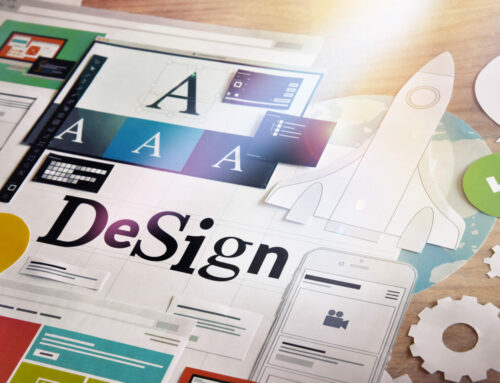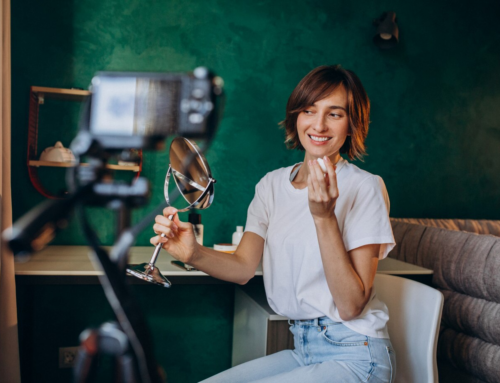Most of your marketing strategy probably focuses on digital. And why not? Consumers and businesses are online and on the go most of the time.
When you’re trying to grow your business, the always-changing digital landscape can feel like a lot to manage. With so many other tasks to work on, how will you be able to efficiently create, refine and maintain an effective content marketing strategy?
This guide was put together to help you with digital marketing strategies. Whether you’re a start-up or an established business, we’ve got the knowledge and skills to help.
What is a Marketing Strategy?
A marketing strategy can help you reach your desired goal. It considers the positives in your business and what you need to do to advance towards the chosen goal.
Strategy vs. Tactics
A strategy is your destination – it’s a purposeful plan for how you’ll get to your target. Tactics are the small things that will help you reach it and ensure success.
What is a Digital Marketing Strategy?
A digital marketing strategy is a well-planned online presence that is established largely through various channels such as social media, organic search and paid ads, among others. Sometimes, the best way to promote your business is online. Marketing strategies can help you increase awareness about your company and attract new customers.
How to Create a Digital Marketing Strategy
Build your buyer personas. Personas represent the average customer and you can fine-tune them based on your own research, surveys, and interviews. Here are some starting points:
Quantitative and Demographic Information
- Location
- Age
- Income
- Job Title
Qualitative and Psychographic Information
- Goals
- Challenges
- Hobbies/Interests
- Priorities
Identify what you want to achieve with digital marketing and make sure that you have the right tools for it. Your marketing goal should be aligned with your business objectives. For example, if your company’s goal is to increase revenues by 20% over the coming year, then your team’s goals might be to generate 50% more leads on the website by the end of the year.
Review your existing digital channels and assets. Reviewing your existing digital marketing channels and assets is a good way to determine which ones you’ll use in your strategy. Plus this will help you from feeling overwhelmed or confused.
To do this effectively, use the owned, earned, and paid media framework to categorize the digital “vehicles,” assets, or channels you’re already using and decide what’s a good fit for your strategy.
Owned Media
A brand’s owned channels are the digital assets that it has complete control over. These may be things like your website, blog content and imagery.
Earned Media
A lot of businesses are looking to create an experience for their customers and to engage them in a dialogue, which helps your company build up its word-of-mouth status.
You can earn media by getting press mentions and positive reviews as well as by people sharing your content via their networks (e.g. social media channels).
Paid Media
Paid media refers to any vehicle or channel you spend money on in order to catch the attention of your buyer personas. This can include things like Google AdWords, paid social media posts, native advertising (e.g. sponsored posts on other websites), or any other medium through which you pay in exchange for increased visibility.
Run a content audit and plan your owned media campaigns to help convert your website visitors into leads and customers. Content can also improve your brand’s online presence. With SEO, this content will even have an impact on what shows up in search results.
To create an effective marketing strategy, identify your goals and the digital marketing tools required to achieve them. Evaluating your existing prospects & customers can help you decide where to spend your time. If you rank your media sources by how well they work for you, it can be easier to see which ones really help your business grow fast and which ones are there just to take up space. The idea is to build a picture of what types of media will help you reach your goals and what won’t, based on historical data. However, if there’s something new you want to experiment with, don’t rule it out just because it’s never been done.
Monitor and report. This process is the same for any media plan: You need to evaluate all of your existing paid media across each platform (e.g. Google Adwords, Facebook, Twitter, etc.) to figure out which platforms are most likely to help you meet your current goals.
Create an efficient strategy with the help of our digital marketing expertise. You’ve done the hard work on your digital marketing strategy and now have everything you need to create it.
Digital Marketing Strategies
1. Publish a blog.
Blogging is one of the best ways you can market your business digitally and still applies, no matter what dissenting voices may claim about it. It’s a great way to attract new, genuine customers that will be interested in your services.
2. You can advertise on specific platforms.
Organic blogging is only one part of the equation. To build a strong brand, you also need to invest in paid advertising. Besides getting more exposure, this will also widen your reach and let you connect with people who otherwise may not hear from you or find what you have to offer.
3. Offer free educational resources.
Although your visitors need to visit your website or click on one of your ads, they won’t just convert themselves. It’s up to you to keep them engaged and interested in what you have to offer. In order to build a relationship with them, you also need to offer value in exchange for their contact information- which is essentially the only way to open up the gated content. This principle is called Lead Generation and it means that you have the opportunity to nurture your email list.
4. Search engines optimise your digital content.
SEO is one of the most important components to your digital strategy. It will help you rank for keywords related to your products and start getting more eyes on your blog content, as well as any educational materials.
Product pages are a challenge, but SEO is the best approach to get your product page in front of potential customers. To make sure that your content engages and converts visitors, it’s important to optimise an on-page layout.
5. Create an online giveaway and/ or contest.
Giveaways and contests are an easy way to grow your brand. You’ll get hundreds, if not thousands, of new followers in exchange for a free product.
6. Organise a webinar.
If contests don’t seem like they’re a good fit for your style, webinars are the next best choice. They’re perfect for B2B companies. The prospect of advertising in an expensive newspaper or magazine just to get your message across to the public can be quite a struggle. Phone apps, on the other hand, offer more accessible and affordable marketing options that are more likely to generate leads. That’s why they’ve become such a favourite with business owners looking for ways to reach their target audience.
7. Create an email marketing campaign.
Email Marketing is one of the most effective strategies you can implement to grow your business. Email opens and clicks are on the rise. Customers who’ve opted-in get higher-quality messages from your brand, which lets them trust and engage more with your business. A brand wouldn’t be sending out a newsletter to people who aren’t interested in the information it has to offer. They either signed up for it or they didn’t, so the business should take this into consideration when emailing its customers.
VIMAR Digital Marketing
VIMAR is a digital marketing agency based in Portlaoise, Co. Laois, Ireland. Our team of experienced and proffesional digital markters would love to help you and your team with any project you have. Our agency specialises in:
- Web Design
- SEO
- Content Production
- Videography / Photography
- Online Advertising
If you and your team need help with an upcoming project, or your business needs help with digital marketing, make sure you contact us for a free consultation. Our team would love to hear about your business and come up with a digital marketing plan.





Keep In Touch